Informationen som samlats här kan vara ett stöd i utvärdering och beslutsfattande:
Hur kan modellering och simulering, baserat på de dyra analyserna av vattenkvalitet, användas för att få bästa möjliga underlag för beslutsfattande?
Modellering av inflödet av närsalter till Östersjön
The potential of using sophisticated hydrological models to support the decision-making process is pointed out in the graphs below. Also, the effectiveness of different nutrient reduction measures is analysed in graphs. Three different scenarios are presented. The concentrations presented in graphs refers to nitrogen runoff from fields to waterbodies.
The results presented here are based on the hydrological models MACRO and SOILN for MACRO used for water quantity and quality modelling in field scale.
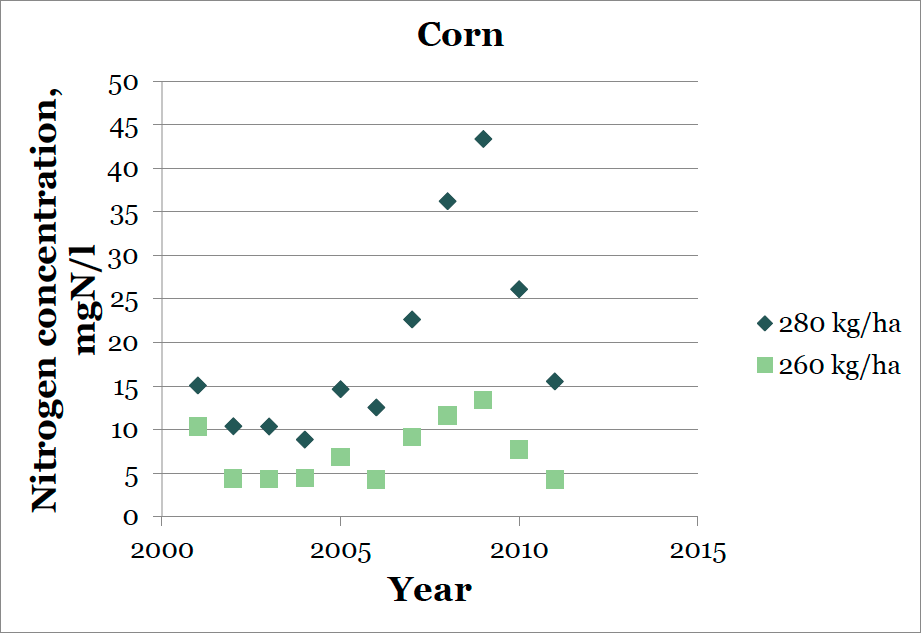
Graph 1 shows the annual average concentrations of nitrogen coming from a corn field with different amount of fertilizer usage (260 or 280 kg/ha). The nitrogen concentrations do not only depend on the fertilizer usage but are strongly affected by the annual precipitation rate. The precipitation rate changes year-by-year so the impact of fertilizer usage to water quality in the surrounding ditches differs quite significantly. This has to be taken into account before implementing some nutrient reduction measures and strategies.
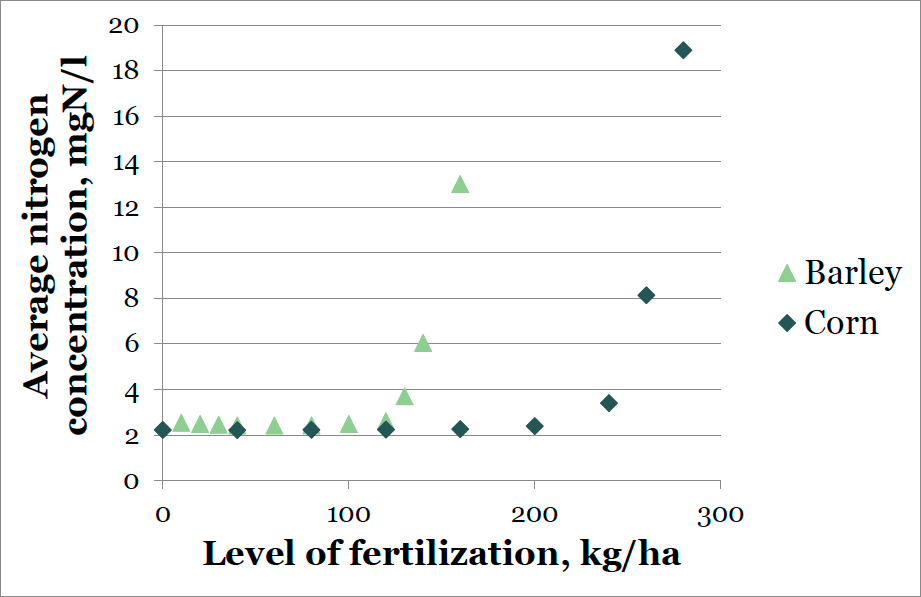
Graph 2 shows the average nitrogen concentrations for a 10-year period for corn and barley at different level of fertilization. Hydrological models can be used to calculate the maximum level of annual fertilizer usage for different crop types to keep the water quality parameters in the surrounding ditches in the acceptable range.
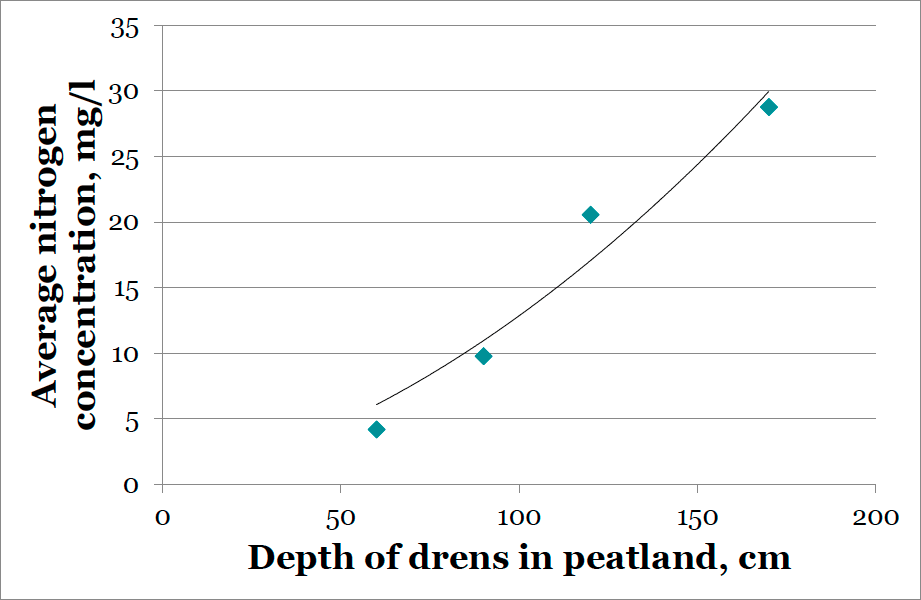
Graph 3 shows the effect of depth of drainage in peatlands to the average nitrogen concentrations over a 10-year period. Modelling can be used to support the decision-making process – we can improve the water quality in drained peatlands if we use shallow ditches for drainage.
Modellering av inflödet av farliga ämnen till Östersjön
Many hazardous substances are still in use in the catchment area of the Baltic Sea. The environmental concentrations of hazardous substances can be calculated by applying multi compartment models, where the catchment area is divided into several smaller areas and boxes. The conditions in a specific area or box are considered to be uniform. A new model was set up for the pilot catchment area of river Fyris in Sweden to give an example but also to form a part in a larger model of the Baltic Sea (Björlenius et al., 2018). Input data were land area, land use, soil type, specific runoff coefficients, flows and concentrations of model substance in effluent from wastewater treatment plants (WWTPs) and on-site sewage facilities (OSSF) and net precipitation. The main river basin was divided into 867 boxes in series. The model was used to simulate environmental concentrations of several hazardous substances among heavy metals and pharmaceuticals of which results for cadmium (Cd) and carbamazepine (CBZ) are presented below.
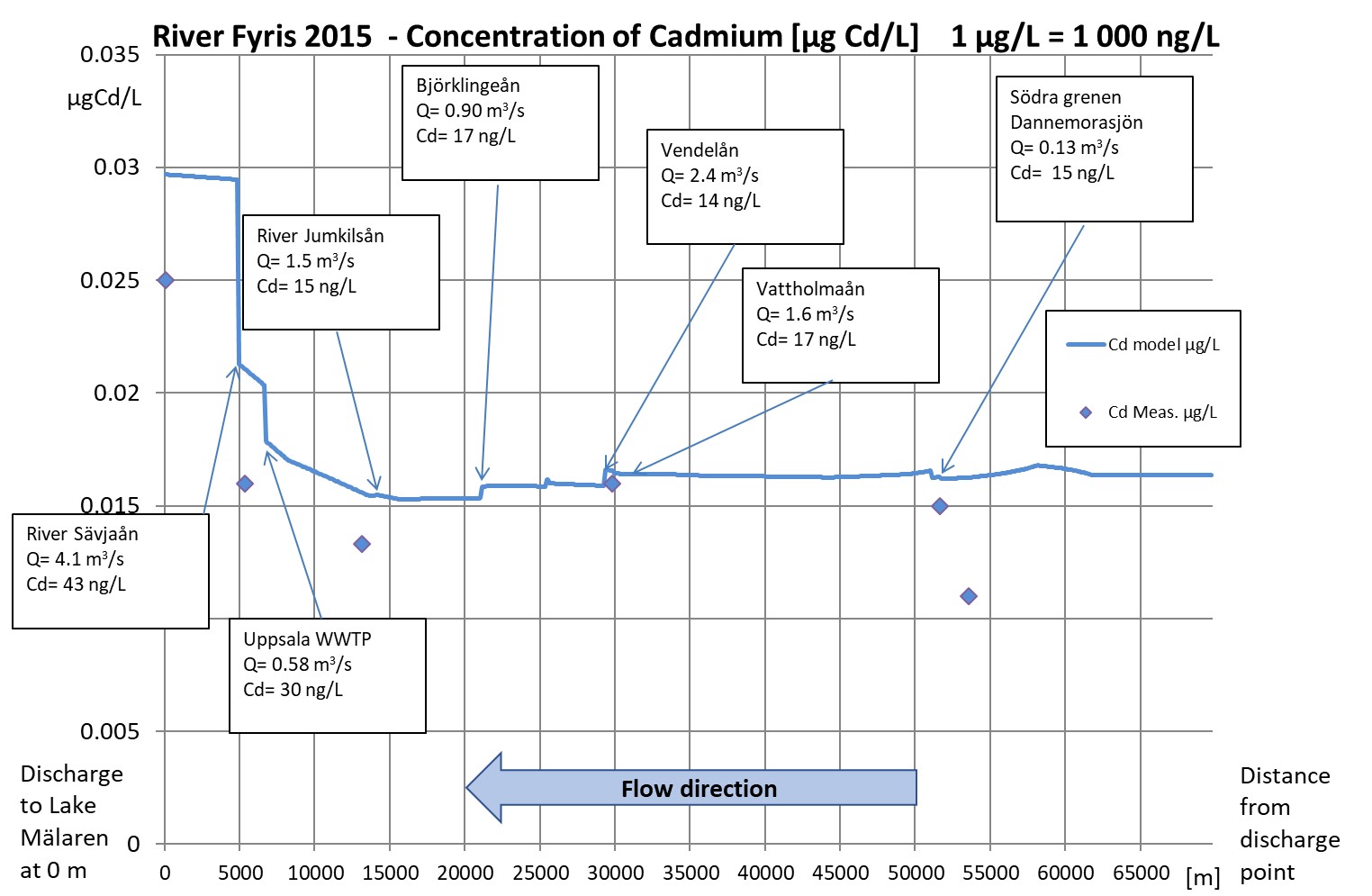
Figure 1. Measured and simulated concentration of cadmium in river Fyris catchment area.
Generally, the concentration of cadmium increases along the river. At tributaries, where branches of the river float together, concentration can increase or decrease depending of the concentrations. The conditions and contribution of river branches are presented in the boxes (Figure 1).
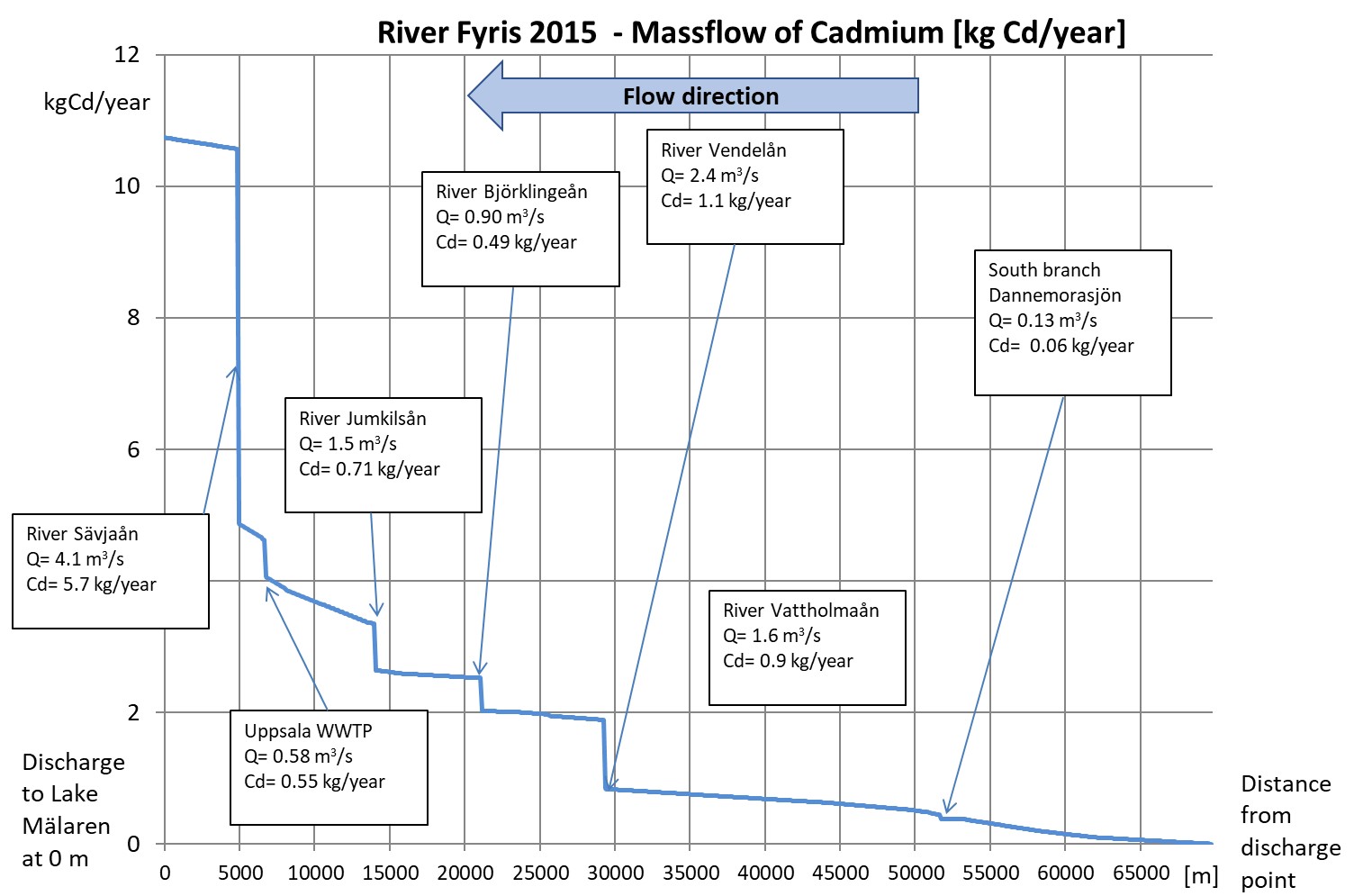
Figure 2. Calculated mass flow of cadmium in river Fyris catchment area.
The mass flow diagram (Figure 2) shows the relative contribution of the mass of cadmium. The WWTP seems to be the only point source of cadmium in the river Fyris catchment area, contributing with 5% of the total mass of cadmium. Another specific area of interest is the urban area of Uppsala which contributes with 11% of the cadmium. Finally, the river Sävjaån contributes with the majority of cadmium, 53%, preliminary due to higher specific runoff from marshy land areas. The results from the simulation have initiated a more detailed sampling and evaluation to track the sources of cadmium in river Sävjaån. This example shows the importance of mapping hazardous substances to facilitate focus among stakeholder measures.

Figure 3. Mass flow of cadmium discharged from river Fyris versus water flow during 2002-2017.
Mass flow of cadmium increases with higher flow. It is not only the higher hydraulic flow that gives the higher mass flow of cadmium, the concentration of cadmium increases as well with a higher hydraulic flow, due to higher losses of cadmium from land areas.
The anti-epileptic drug carbamazepine is abundant in watersheds and lakes and it has been detected even in offshore areas in the Baltic Sea (Björlenius et al., 2018) and carbamazepine is therefore a good candidate in the modelling of environmental concentrations in river catchment areas.

Figure 4. Measured and simulated concentration of carbamazepine in river Fyris catchment area.
Carbamazepine is present in the water along river Fyris. In the upper parts of the river basin, carbamazepine comes from small WWTPs and OSSFs (Figure 4). The major contribution of carbamazepine in the river Fyris catchment area, 88 %, comes from the effluent from Uppsala WWTP. Based on several sampling occasions, the total annual amount of carbamazepine discharged from river Fyris is 22 kg per year, which makes up 0.6 % of the total annual load from all countries around to the Baltic Sea.
Pilot tests in the Waterchain project has shown that carbamazepine can be removed from WWTP effluent by applying ozonation or activated carbon. The removal efficiency exceeded 98% (Beijer et al., 2017).
- Reference:
Beijer, K., Björlenius, B., Shaik, S., Lindberg, R.H., Brunström, B., Brandt, I., 2017. Removal of pharmaceuticals and unspecified contaminants in sewage treatment effluents by activated carbon filtration and ozonation: Evaluation using biomarker responses and chemical analysis. Chemosphere 176, 342–351. https://doi.org/10.1016/j.chemosphere.2017.02.127 - Björlenius, B., Ripszám, M., Haglund, P., Lindberg, R.H., Tysklind, M., Fick, J. (2018). Pharmaceutical residues are widespread in Baltic Sea coastal and offshore waters – Screening for pharmaceuticals and modelling of environmental concentrations of carbamazepine. Sci. Total Environ. 633:1496-1509. https://doi.org/10.1016/j.scitotenv.2018.03.276
Var skall man börja när man vill införa nya krav på reningsverk om att installera nya reningstekniker?
Avloppsreningsmetoder för att rena bort farliga ämnen
Farliga ämnen har en stor variation av kemiska och fysikaliska egenskaper vilket gör det omöjligt att applicera en specifik reningsmetod för varje kemiskt ämne. De flesta reningsmetoder som idag installeras efter avloppsledningsnät eller dagvattennät minskar belastningen av många ämnen samtidigt – de är breda reningsmetoder.
Lösningen är att identifiera och installera breda reningsmetoder som kan ta bort så många ämnen som möjligt i ett och samma reningssteg. Exempel på sådana generella metoder är oxidation med ozon, adsorption med aktiverat kol och membranfiltrering (membranteknologi). Dessa reningssteg läggs normal till som ett sista reningssteg i redan existerande kommunala reningsverk.
För att identifiera den bästa tillgängliga metoden för att rena bort farliga ämnen kan denna tabell vara till hjälp: Reningsmetoder för att ta bort farliga ämnen
Första steget: Försök identifiera källorna till de farliga ämnena i avrinningsområdet.
Andra steget: Analysera förekomsten av de utpekade farliga ämnena i första steget ovan.
Tredje steget: Välj reningsmetod, beakta vilka ämnen som kan tas bort med vald metod och se vilka reningsgrader som kan förväntas.
Nya och lovande reningstekniker
Dagens konventionella avloppsreningsmetoder renar inte bort alla föroreningar, därför pågår avancerad forskning kring alternativa metoder. För närvarande studeras biologiska metoder med mikroalger och mikrosvampar men även membranbioreaktorer och biologiskt aktivt kol undersöks. Trots kontinuerlig utveckling och förbättringar måste fortfarande vissa hinder övervinnas såsom biologisk påväxt och ekonomiska förutsättningar. Metoderna har dock redan kunnat avskilja flera olika typer av farliga ämnen såsom bekämpningsmedel, polycykliska aromatiska kolväten (PAH), antibiotika, hygienprodukter och hormonstörande ämnen, vilket visar den stora potentialen som dessa teknologier har under de kommande decennierna.
Tabell: Nya och lovande reningstekniker för farliga ämnen



